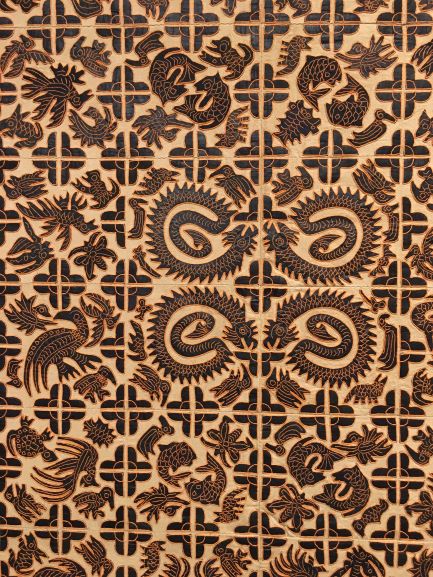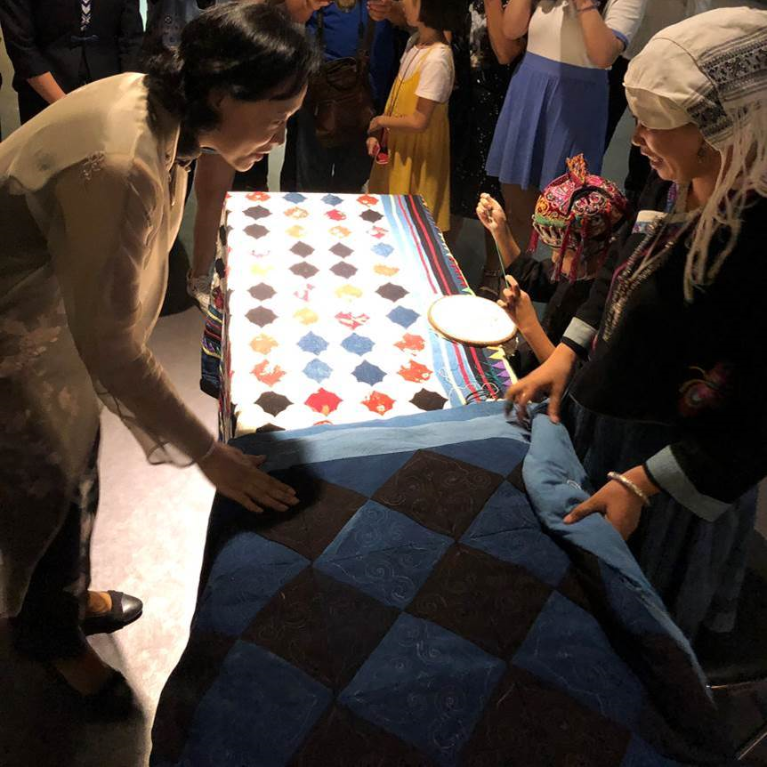Since 2007 the AFS, the China Folklore Society, and folklore studies institutions in both countries have worked cooperatively to build relationships between folklorists and folklore studies institutions in China and the U.S. This international partnership known as the China-U.S. Folklore and Intangible Cultural Heritage Project has led to the exchange of best practices and building greater mutual understanding around our collective work to safeguard, preserve, and present folk life and intangible cultural heritage in our two countries. Michigan State University (MSU) Museum and University Outreach & Engagement have been the lead U.S. university partners. We have been able to develop conferences, scholarly exchange programs, on-line resources, summer folklore institutes, exhibitions, and publications. I have had good fortune to have served as President of the American Folklore Society when we formally launched the China-U.S. Folklore and Intangible Cultural Heritage Project. On July 15, 2018, I was able to represent MSU's University Outreach & Engagement and the MSU Museum at the opening of an exhibition that was premiered at MSU Museum and has toured in the U.S.—and is now beginning a tour of Chinese museums.
The original international exhibition presented in the United States was titled, "Quilts of Southwest China." It was organized by a bi-national
This exhibition features remarkable textile works are expertly fashioned, patched and appliquéd together to form powerful artistic, yet functional textiles. The exhibition presents research and collecting that provides some of the first documentation of the making and use of these textiles. The project partners include Yunnan Nationalities Museum; Guangxi Museum of Anthropology;Guizhou Nationalities Museum; Michigan State University Museum; Mathers Museum of World Cultures, Indiana University, Museum of International Folk Art (Santa Fe, New Mexico); the International Quilt Study Center and Museum, Michigan State University Museum/University Outreach & Engagement; the American Folklore Society; and the Chinese Folklore Society.
The exhibit originally was made possible with major grant support from The Henry Luce Foundation with additional support from other foundations as well as local funders during the national tour in the U.S.
This exhibition has a long history that began with an earlier exhibition of American quilts in 2012 entitled, The Sum of Many Parts: Selected Quilts by American Quilt makers, organized by South Arts and Arts Midwest in the United States. The MSU Museum played an organizing role in this exhibition and exhibition catalogue-- sponsored by the U.S. Embassy in China that toured China to some of our partner Chinese museum. At that time, our Chinese colleagues suggested that we should collaborate to develop an exhibition of Chinese quilts to tour in the United States. After the remarkably successful tour of the traveling exhibition, Quilts of Southwest China, to our museum partners in the U.S., it only seemed appropriate for this exhibition return to China and tour to museums in China. The exhibition has a new name, Quilting Arts and Tradition: People, Handicrafts, and Community Life for a Chinese audience. We are pleased that some of the 
I want to extend special thanks to Director Wang and the hard working and dedicated museum staff of the Anthropology Museum of Guangxi. On a personal level I would like to recognize Professor Lijun Zhang for her role in serving as one of the lead co-curators of the exhibition and co-editing the book, Quilts of Southwest China along with Professor Marsha MacDowell of the Michigan State University Museum— and for their special efforts in helping make the exhibition possible. Many other scholars contributed to the exhibition and publication from our U.S. and China partner museums.
After the opening of the exhibition, our curatorial collaborative team of museum colleagues continued our work on the documentation of the intangible cultural heritage of China with an intensive period of fieldwork in Sanjiang and Tongle, China (a Dong ethnic group). The fieldwork included interviews with artists and those involved in commerce involved in traditions associated with basket, textile, and dress folk life traditions. This work is also supported by a grant from the Henry Luce Foundation and it will continue into 2019.